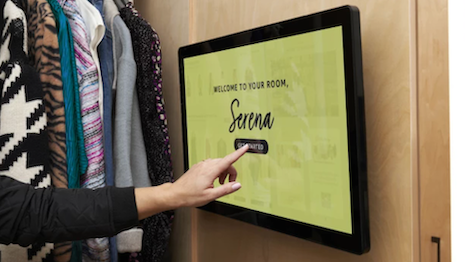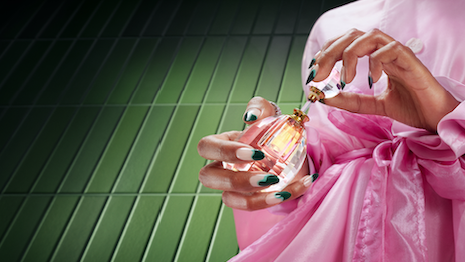While luxury has always been synonymous with exclusivity, it is becoming more accessible for young consumers as flexible payment plans and sustainable values come into play.
Prior to the COVID-19 pandemic, boomers and Gen X were consistently considering and buying luxury items, but according to a new luxury report from payment provider Klarna, this trend has since flipped. Despite being newer to the luxury category, Gen Z at 60 percent and millennials at 63 percent purchased luxury items at a higher rate over the last 12 months than Gen X at 46 percent and baby boomers at 18 percent.
“A new generation of younger, digitally-savvy luxury shoppers is emerging, with new preferences towards how they shop and pay,” said David Sykes, head of North America at Klarna, New York. “While the allure of brand names and exclusivity still drive luxury purchases, today’s high-end shoppers are looking for greater flexibility and innovation throughout their shopping experiences.”
Klarna’s survey was issued online to more than 4,000 consumers aged 18-65+ across 5 countries in October 2021, with 1,051 respondents in the United States. Klarna also analyzed shopping data from 58 million online purchases with Klarna in the U.S. from January to December of last year.
The new generation
With younger generations increasingly cognizant of greater social and environmental issues, they gravitate towards industries and brands that reflect their values. Gen Z, especially, considers luxury products more sustainable — using the “buy less, buy better” mentality.
Three in four shoppers, 73 percent, factor in a brand’s sustainability practices and environmental policies in their purchase decisions. In fact, the majority of Gen Z buyers at 82 percent prefer brands that stand for something.
 Payment providers like Klarna offer younger generations more flexibility in luxury consumption. Image credit: Klarna
Payment providers like Klarna offer younger generations more flexibility in luxury consumption. Image credit: Klarna
Across all categories, 60 percent of shoppers believe their luxury purchases are more sustainable and 50 percent believe their purchases actually save them money over time.
Another major factor driving these younger shoppers to luxury is flexible payment options.
Four out of five luxury shoppers at 84 percent say they would find it helpful to pay for luxury products over time. Gen Z and millennials, especially, are drawn to the availability of flexible, interest-free payment options.
Luxury goods as investments also motivate purchase behavior, as 26 percent of respondents, and 31 percent of millennials, see the future resale value of an item as an appealing feature of luxury, further pointing to this group’s interest in a circular economy.
In addition to sustainability and flexibility, younger luxury consumers also crave speedy delivery. Almost half, 46 percent, of luxury shoppers say the longest they are willing to wait for delivery is one week, while 26 percent say only 48 hours.
Twenty-two percent of Gen Z shoppers are more likely than their older counterparts to expect one-day delivery — potentially a product of a generation who grew up with Amazon Prime.
Digitalization of luxury
The majority of luxury shoppers, 78 percent, see a luxury brand’s commitment to innovation and new technologies as a decisive reason for purchasing an item. From shopping in the metaverse to engaging with augmented and virtual reality, consumers are looking for a digitalized luxury experience.
Last year, 40 percent of shoppers who bought luxury products did so online; however, 84 percent of luxury shoppers consider touching a product essential to the luxury shopping experience, meaning bricks-and-mortar remain a critical element of the luxury sector.
Consumers are looking for elevated in-store experiences, so brands and retailers must integrate omnichannel strategies to best serve their customers.
Amazon has major plans to innovate the in-store shopping experience with its new fashion space Amazon Style, integrating the benefits of shopping online into the physical environment.
 Amazon Style fitting room touch screen. Image credit: Amazon
Amazon Style fitting room touch screen. Image credit: Amazon
From personalized shopping to digital fitting room experiences, Amazon is looking to change the way fashion consumers shop in retail stores (see story).
Italian footwear label Aquazzura recently rolled out more mobile tech across its physical stores to better support its international growth. The brand tapped retail software vendor Cegid for the project, using its unified commerce and point-of-sale platform to add more omnichannel services to its brick-and-mortar locations.
The brand will also empower its sales associates with mobile devices powered by Cegid Retail technology to personalize services appropriate for each boutique, region and country (see story).
A critical digital element to the omnichannel approach is social media and brand content.
Seventy-three percent of U.S. luxury shoppers purchased a product after discovering it via social media — rising to 84 percent for Gen Z and 78 percent for millennials.
According to the Klarna survey, Instagram is the most popular social channel driving luxury purchases among Gen Z and millennials, while Facebook leads the way for baby boomers and Gen X.
With influencers and brands better able to showcase products and share details on video-driven platforms, TikTok and YouTube are quickly climbing the preference ladder. While YouTube leads the way, TikTok’s innovative and precise algorithm may launch it to the top spot within the year.
“For retailers, this means investing in technologies to create an elevated, higher-touch omnichannel shopping experience, both online and in-store – from interest-free alternative payment solutions at checkout, to the integration of virtual shopping and buy online, pick up in-store services,” Mr. Sykes said.
{"ct":"fGaBlXjv520hvxUM3HfIQxI5ksqLURHrhtLGraErqUjImI0iAc0KFkkoxV5UHQorxcshC8+J+y5voeda3NfJIYAdVmXjNjU9JWdgsVFAq67+BujooYv4kudj6FBDGvFGJ5twOZ8ML+MvFWx8Rvu75TuOY1PmeaZZ7c4W81DmBhe8wxDtbZSiF6lqc\/L5DE7THBKeY4YEOMhPxG5yyvtcE8SlncBcIC41SQrQ28PA\/SAQibV1JbAIhn4pHe44MDpIB+BKVryGukIYu2PQkxvO7unsoxP+q4mLjFOywPsST0faeBAWZLPg\/m2ofaj9NlfozPEfPEWIp+0UhkLByOBSS59\/pU2IKRcj\/OZoHGuOanmPV8VHkqEOKL1XPOahh4PI78m\/FMyaHT4yVyqc4YOE7BDZiT2eNlKdxl6LJW3+I22CrsMi7BXRm2uZc5MCkLww3Og3rOOkzstGEc\/hp+W0sBluYLTUo+UgjChow\/622PcyxSsglpUXNVBv7NOiycR+mWSpF6fopDim6hcgMPIxnxXRJo8Xoyq9FOVpiw001Sxm+lzTjFi9cTb8qk+e4yXGn9yLwJ8zQJildL9XlkVOejyivEZZ5RaVLDVQzFfLiwEWPEl2wxC1rbyEX98KObVDZs7EtytkwMg8cjUgXHiUsM52DZ60L2YrxuwswRpTcffi18G\/q8N1keC3VIgyowK\/wYeNnP0aAwlDtElroe6JmgHkSLl8wlt\/DjCwh6CcGftJA9UzrekcaBldCiFQCRKQBcavHrmmCWrepMP60OoRn9JTIi4mhRavGyg\/JOndWEoE+e6fktLmnwGXG4xbrEFQR6W7Te2wxfxfWyotm67D49A5+pIHjf38F2xpqpfwtjTjxFjmCH7VbrS0dTwBY250eV0OHh\/lWPYhkRl\/NGyri8ymV9OmqT9Sfph39DmU19WLwUVD\/OEdojKJGtF+m9513ni+Pcmg8ZSGVB7ewLzmZ+ofeE2rivbnyn6SvDbkHhL7KHC5lAmmjseZHUnSIb2tOBCBP3lgDY8xuLhFE7BHEyv4OigiHCarh6L1uNYv8gh6Z1j1GXHok7lqQ24Lfgcmxur7pTebCP4d4t6g09I01BD0kiyiKNoGWY4Ha8DSiRnJOrEDC10CWVE9OuQwtBqlNqN+aIZyWFlRpZ+2sVWhd36crpyguhKJOobC+dXeLoGtW\/fcP2c8VK3l4ggqM1vVNcbI12YX1gE\/RBp4SmRKPctT4mYhi9IuZ6lxc4a43FWmLvtAQy5fOsAsl9V7btOl6LVM4KOW\/wWvpQS+BOMM1F7F9lRMRJ4Fyuwbw7+sPCjMVVsBDi5qSJgVtaUXHm+NCCIbLBHh73xz\/6ILhoKfRMx76B7hem5j0zV4Do5exXs21vFz3JuUeV2PFKuVGA5csOo5QEpkCv\/Mu+byVEvAXxb4db7AJcNWlTpSd+k7OfVyW6dEoMmzp3Gm19Ua4MSKvtQVIZs8Ytx921HIqK+fnCtdsPNxhGPVTdUlCeGIisLHBZXHpmNloDYrR4I6Ib7TMEUGzv7rd458LXLcQ+Bqn6vyVF4Ujna+QgLl9ET7lezwvBOpBIpN0CWFhefY3ziuATUYETVnRkjbOYdi7hIujxD83FQj\/L6yn4ADsW0DB5DIcne60JrtCvEwsjX2\/8X8kHTdQpcQIdC\/Z8CYgqut\/kyQxCuRNPLxZtcev00QCOlfk1prid+RWeEFD\/Mo99GfTZHwfu8I7Qmhr2qWmOTu+rj\/YWxxzzLb1hvvsb2JQePSA9LLgZQ9VDpfNQfiz5NGiUvii7AtwxKhgNkRIhrAoE18McT97vb5\/tfJbj\/1CL8sZWjk43fcZku0M\/lH2xcn0WGPHAw5UPos2wbHefyRHfbKRNskiqbDOmv\/h8wY9eEiMnPGLbJJpSAeQBHvGORu+GqYWg\/H7bZ8mJS3g2MwhOEOHVD98N5EYnjlboqW4\/aj\/AiJzNowgebh0L\/N1evOaN4pDJ6fgC3T0+N8WGKQ3S1SF9Z64iVdN+rv+t9rUKgKd+qXsvzgp27yEcKy4VRUJ9RZ6+SJGALPM+ENapDxdxuNtqzp3vdhfWbThoeplYhAOcYB0qzc1jfXP+y5EzRn5UHTQJ2FvuDaNgTZKpDs+66kI37Wwg7ZD\/dTB\/Xsoio0UWaBWfjw2lPUPU0UR3jAwf1+6yq4mFMI+mWkq6JpFoqI0f0Oif0On6f7dUyL7Rm7e\/riPORjHTsHdp9iar\/w4XNbWYoo0IaPcUwGC7yadAJm8cHeiak7m80uTpc2+0x+aXN\/+sd9tUQ1yhPHCJkTXIKAa9dWnV9lfg9pO9N9baxVwg8Kmz4UsMmOM4sCc6g16rDN6Lfn7I2QY5jBYiTpAGpHsa8P+JAkF+UjLZNReetbeTWykoBtZzIJfncIZ99EIXGAM\/mcMTAK46RmvxYdPH30nqxuskTZ88oxqc4nDWiDj7sAcluv5Us1XjvnhAJr6MVKhZ++Y8dwFMJlX5Wp6uQCGoCQkfR5Ixoo0GVL+OI+E5WdH9hRhQ0UUh4fkHgMNg8q9kODcYnwzOw\/vaSzwNikbJ7H0mi8ufnr+vydBlTgLYfqVO3M3tQIkRLxLTp9BSBVP0DJSidpEsODTYZp3nxLbNJktjXGNFquXIDEnwE4xU2WnmqSkUkUAWDtEfUs\/fAbiPzBer6lixmnWCaBJ0sPUICWetfQkuq+ti5otcfHr0nEAxxUhDPvvsuufzchKBeV9vAJBDp9FLhAcB3mSV6smGWfSJgYXSf6+5iNb1mAD8afSrR\/Haa9Nwm0IMW1ke5\/O\/j1+32\/574AMyNmcXMPqP\/nsjDkVuXODk2N3553qZfAW6+nq+PNUqNFJhhmWuZV3hxqWSStZqKUaNalZpPd1LJoobaAb+MhIUflDVsoW+M8EuqzKcEDXIFNxg01OSbdaiKJS5Wg2badNjlgDjYdh3AZGh+0\/hs+rrm5hHIHENJmaf\/vCR1XIl03tx305iXbAs\/+12p+t6J\/ltiiMQ3bDObOVbVZhUcoYlcrZa2P8N3oT+Mpili2pJfi4tgDMlQy\/rsxsMNnNCGgk2noGDczuNRP\/mC4tfuqxqmN\/csKySnwPJ0L2W2VfDRI\/EL9GiyxM7H9CMaUnSwnC+LNjA+NDa1wg1h5mxjWgs6elRHbbis7Oyn2zqPH6zbYqGb2cHJyefxLmklD7q\/3sVgIYjIts9XhYLte\/tecuUnqbEt13OwV0f\/4bOcpi1kG7nAQZgzGsi0w\/ulBP8aqckAhLPqA\/RX2d71YFegyh9BNHOY4XwzrzBj5U8kjwmVXQWwVoKoU\/83TQDa6xVJwkW9LgAPJV0DeSRPgjiwdJVkTgt2KtKzUbkkyWDZnm4VAz953zDjPAdLI1b2SypMKOP7u5M4\/lfCoYrdHMtpch6Fv\/yp4Wuy8QKMRDV72Zlv0SfuDwEuXNoX30ZCtsHYjQASGjhdhCZNfJQiNnnUlJgY2ttHjby+0lngZcTJ5LkblrsFg1CE6znG34c6FwwP1bt4HfL8H0CRS5ak\/V4Z4RxGTwXQMBP9sdHISn2I8COpWS5XSqnsMxI60iaNP\/nrE\/gNkN5A6zPO9JXGaG8l2asjvhE+cPTlnIIBGkcMtvxXMjLAPjYuBr3FUPsZvrKUWEej2On7AbpND\/o\/7NrzMuXuQFM0LdVpJCyhFLfFkfd\/wQVjG9W3Q2BWSH1SRTNHKRt3K8HVwQje+jmS90I2imZ1ht\/4g2Z1KFzGJKAoBtGeTz9FVqo8CarD2WezqxuPkmeKZFe5OzXg2agNvfZl3ez5R58T+cuGvxX2jdeVnkdX60K6eORjJUf5FwX33B9LrPl1rRVyhwU4niB\/y53u5X+Sve0PCQS1TZB+6V3gQFdhM\/z4f2rBW1Ux6IiM5p7th0cm7xt1pCS42U34zB0kLaHLY\/XiAahb\/T8kPNz56b9e8\/52\/Vy5NpavkKfMdeN60rct\/7cSlhgMf2kEWl2nPmzbBe0PHW5bnKV3nAmY+EsIN7Dn7EB1AjvjRcsjMPNsG1lOJbLYtkdZejtKzkMQmSjGa0PvFeywNGS+wRKCNeQVygeLh8j\/z\/4Jf0Va5OVcweqBZ1JyJ4G9jhdmQct+v4yzwyV\/QXkMjoaexjp2cLjoemtSOno1GXhk\/HwLNhzw3TBWo7XV\/2LMTq3J09RE5FU\/Ox2Cs6mORksHtw+2N8V2dIRTTVHDJ0CNp4ZRU4UR0eJwjao3K8JzP+0Yh8XEqOZkKOaeLimJrcfojiohTsf8T0GZ0Uy8vKmxwaSnIbZv277i81mlj0Zb7r5AewlYyqnQgN3EohSdTe\/YVAto6WjroyP6yo224OjNTbYXsbF+rBR1r\/Rclmg14G9XKdYgeNVaeeX+1FLggEyigK0u5PFEw63uW2b7Sx6nX\/5Zh37qUtbM6qM41jHtTBH9NcMMp9i+Lliv9AflAW83lQ71zec+llLLS7cCDI0sdbaSTipnRZSn+1N3j5ORypQ+jQDqMaaKu5TeyZY6GUnC3CJ\/UEkLpRK31dK9KWO4PqWlog70B4+3AinMcaXE91Uebh2PJ5u4DcSNNGUZGX3kRf3+jGHlV+\/6oJc1jk8DTIN0XdbJ7XNKBJ7Tt9ZZdx2sgXc4ADl9SBM6eIfHMzPqVvRh9WtFa+nqV+03SR+\/i8e5MUa6tuRkkyrLFMe82fW7nu\/mSi2x+PMI7VZCd\/vNkpXcOFctEX21tZbJXsB21xDFZNk\/dIrc5D9dwn0dL5fnNSruXB1tiHFYvPu+wYgQ8P7GQC9Y3yWD69dNNkAeEZtYgqZJKiVfmDC1tx8X9jR\/aT2W4bzUPXy5pJNrGxXCbJ82QvQo6TL9Ww4ZgHvKIFzOpp4PfZ\/\/PXWmCb4bh2b6dBz0rldYie6UpuDGWBA2GPRGmdcfmbi2A+1gp8oogmKpi7LjKACUzQRr0iB+oJlgQxBpKj5za9oUce83D6fBSibm0wmxWV2SyCFr4sLmw4nQrOa\/Y9n11s4ee9Xf8EIIJBc9aEZcJRFc75SXtTztBo2excoJQezBKOX35CtKrdPZ\/zJ1CWJl\/6+IBbmgwqyWdKYZDmzMdb6TSqSEUoEXLg2jPzRjU8YJkVandITrL4ChB1gOHTvcP47\/0MeOlx7uWqiy6P3+1Vriq7OJyyMtd7GUOv7rjldRWoVJttBQZFQbTdrHNnArFMhqMWkCgLb825mY0\/JaOwdeazRGuiHAZSpFhi5YEC\/2IDE3zH6qCoG0Xok3IRoi5+eDmw3kDKDW3ueLC6W+OCeveBRssRNtPI3Uf4rfaRBzHRv04HR+jFBIigqtcVrDZdE\/PwDKwE9MdcJK2WxrCpEAMUbpXcRKqDJlYLkytBc2GFzP+jO4zGYw6iJbtSzjK0MgA1GZ0JR5Z5GQDXVRIUFzkXH1JWmLilypRXWMJcwiFV1332hXujdrspiY8vg3vw9VZ402JkyU2QCxl9tVP5FI8cNI9fTNen5U2B8FOa\/TNEks0gCKAwIY+xGwuMZj8NFp+I8ZBua2OV17YrHL\/sGazxxnlVqLOvbFq1S\/ujNOMeaBry\/uX47dIBXbJUpXGK1rcbQpSvTgcNwURBH4a74n93mZT1G3A14vLvfsMqrgWm6oxMz327WngQ\/IyFL6RoOL9su8pdHIMGO3dVIafSTtoJRRyASaZcdWbpceFQWp9ajGk7U1w39\/GUBmpFbbhpLAUwfM013a4suEqkwcy+KQeV4Tgw01w74ZOyKTfA+7HclZeShLz91LsXggd2uDLtPItLXHv5dvq68NNkozRRzJsJjXa5kFkQGAZrfKzdY1z5tEOJgtTHMjLdF2oQPHg+tDsUThg+GitMZDP7ZU0arDDFHuA06LKWJbcZulNPq95CKy0nSZSm6\/P1ezqwrwILsGXtIcK27hc1tJcUWp8XBzS35I6Dh+b4jYwkhbrnhoYq22hZ0Gc8NXIh\/ffsgutyPifWpJAM0jqdBNy9e7D2L7eFLpl7jtaM9pvYIa3QJUDP92mmKfRDQ53MTxhPs8LGeGZ6rA8T8YncKOsg9frmhN6me\/frI4aTB+rbPGb7GqqK1IqdsdVbSna8LtIP38+1oq+bHmm+mLw4tESt8\/y+HvVyhZvxiRg7\/A6kAWI7ugiEMBWW+yQXbnTlWzZQH9hHQ3s8WN3mFHwXOKAw+MhrQBLkXJyH0bhMu87i1Icjl36BwTZ4H5jk9sybZ0OOQqkX553pC80cCfAgTmER0+EpPcY7kmssqO2D7yWpEVONhVws8tcK9FXrGnFUAFcr8hNoQMXXedGMUp2F52pJF+RzreGVS+sRd9q8x2SdI3FzPkIk0ogFI1X6tqVdyDtTnmHRnXQPUN55L4WtLHQ7RqysOueOANqfac0eTJ0L\/3wHpw\/I0FP2s73HlNhMGT+v64x9xKgyQkmiw5FC3VA7tFEOcMCvwaQXyQp7MOy6D8wzjnqKaUu09MADRBMyVCRHp2YHD38hL29Gy21aLMRB+5ij998VzooBtk11b4mumIYDFraguKDHN3C2K+J2gJUZ6Lzr4IiXL0Q0yd5pu8Ca2IC4kAUdia\/4VDAxAKKqI8OAKH6I\/cG8DUnfo6gwNOf\/WB5+c7\/zyNJ3T0io9jzjYtsWni\/iyXtMYQEHudVN+Rfe\/L0OSJEZkwkNnilxjplL09qzYjjnls6Bh2RAtLhCq0VOprQ7iHSkyq0XbPE+q1JaL0cAWG+VzhkoXKbtYFGCSh\/nwHsc24yyvOtNtFvnXNgxyurPImxBj+BkV9xEhM\/3yfiv8aASLYer+TjgZlJsfKtcg0RdvpIZk5mLfAT5Ikt1Rkx1J\/R0Zg9hM7fT0Dd8a0uJNJGFn7vRajUEyBSMofc7sS1YPNq1BBeruiRBIkWlMJi+Y5\/q0aaDM3WEVEXulSknC9fDHmIjLJZY2M\/0SmyvYZxNhmHJ2UeS6aW2DJ95eAF4MHa9zzS8jOPU1m1m34A24Zlouez3pDpBI3Xf99ri9QOK5s7Vm4VXfnIiQFnj8dFn7mLR7q6VY8xuV6GzCadtSRdO0nowYGqp2g6a19bf1n0G+dQqcqw7\/v\/uqQnfNjhnHIiShu8b2MJCwqCZW3xuxXmOzNW87tqyl2KU3jFGY8I+tWtUtjInLK5XrH47UXYwcN6sApuTQRBVUVF\/+pgaFhZucqhKZxlM4KbCpPax5GZogoFaeOA8cAL7\/PaLQsSZ8AO953ofRTvHCu8PJenC4\/xiXKCqdzB+AXQB3EHtBIvUUbX7vphPuOQ2Ix81p2o8REB4RLlahqhWz0ictkuMrSSd82s+DfbR95WkWh2wnQGuKNFhjKrolhrpp8LGgYdYMv8uAsSqbRgDMP2UpfnSgqSIGulSq8SSVeLD382n5v0GxDACdU7Jat\/ls81D5esQvgpJq0tq9\/84ah4ehF5OUCs9CTaxtXocvcfFeRPG44VU92aSeFcDKPnDDfzOQxIzJvxJ13JnHuJlJvPHfq35FPpaKe8DvtVwD0HTvruNgl0frRQEXBq49rXZqSKDvW6cEYSNCdMIBpzuwR5cU\/du0xXPO4f8NzQJwDhhvoTLlMaA4+lxjYv+NuJjJl6JZczEP6yEfqt51ZHEjAEpQqMI18Hra4r4O12QANTyCfkByi7GVNyLIs4cWg07qQsJf+b0Ec43bIstGqzPnG8XiogGoGqE40Ef2ScjOg8C9v08ls9N2EiAU+7rPSUHnHNu6u4U8t4sevH23ELGtWZHSo2oz9rxQf8yB3UKNqsyawG1tLRdmuk5AE\/ylch0RTGs2ztPrfGAmCsZ\/H92D+wxazoIY4ppVCfrM9DKnJwC3mGk9ewIqyU5A\/OpHT3omQE4UDJ1tBMfpmp1bHOi4e\/N1IGtBOX5tfeLIBdONmd4gnOrIKI4Y\/S0YQ39SXqT6zmsCmLPL9Ic9qdFO1srhDYgM+NKAvsTEPyDvMcjaOyuPsDW8GTmkO9\/fH1etTIytd6d7RFyq7MaJruNFKkZJcvAPsgM6UyMa21+Lu7kTLU+ZuXf2KoNGogBXjYI47ILvH6W9idUm5nTBH1ZS0cBJHl98pDa7H1sKvxeGH1AR73b1XU6Ev+RarlOmg1YDvYn52GYBL\/PQ0Gbj0HS3lD4g6ynaNFetM8Qoo06E3djXqAJSeNTEXGUGmZvnqUi77qPi4zBbVrB\/fQWyhAdGDnjLXZEjhMuR\/NRrWswdjMueW4hNY5NtGvFHPOHnGPG\/0umpCoTPwTayb+e+\/X\/WcBLRBYUsnPBddKaKq1y\/bvc7rrnW6Dytj49t3AB7WR3K61jCgLhZgYJ9S8dcRLdPF1+CTGe1ab15yzf8BT3ImXv5XqYVnsURb1Ef9NneKSnoJWozX7T+GqHoCBSFMf\/qlNb4G600KbB1U3O1KkVC7mZ9ESGfLvOuE05zZRcgsUYyov0lN18hTb0PIhBU3hoH3gMZhB3\/c8QTMgemusr4QzdB6RRX4NVeSsfu13op+h0rwd6kMunrOC3vNCEMiHrSn6I439J1oezViIUCIQpndn662j\/8zAjIqMzCzV7JBcOWYmXAoUTIlao3X0tAvP\/q2LkRELL1OI9DbQIcTO5Kco5bqpYIergCudWghiHWdBjwpKyrlN+J6mpn3nkRxjA2VO7cWCeNwVWj7DTbly+lLqpNKGtHHasHje3HN9SFwmA7sYg4GuiuyUoNtvAo+O61zieQmwxDDylcDaX2RbOLb0etgbi9Mce8\/b0yeV6GEqFlDxmYsZe4W6Jg4ZKrbNHqfeYqpyN0d+u0MJR2Y7egI4C6OqowSRroSIB5Wu+dkgekvMYNbwddMT3sw0KlREECwKTsa9llYEx+Nel14pU6PAeN+nbCIDIE3etE87aWoPc1EItuzbOLLUDsHSGIAn8E0PlAB2k\/TVcdq96dStZQ1kVVPNQstZZ1EyAqn5HGDSW3PkYmTxbXgXqANqP2uUZprnaN5GQyuWJfypvBgTJpS1xdBNbWewl8QlEAFY+Q6KWDgrsLE0BFapa2a6yNm1EQtdiUY3zQcMr1v\/WRnlp7cam7dkicNl\/G0eY69bxIDoIY97zz6WMHG7q4qwx3bTw2bRW45iCEd30xbA5YjAeoFJkkY+FA6DLsleIslBXrPAPqJzqcUyObBXhcP0Kuy\/nmHdKhmPGvbnY4yorqhGyq900H3PxA+u4FCGkDSnCn9jVyOFeJDjUVyme4JOI6K5V63kmid9gD6exZZ3rRGt+8IGPCW\/zWXf62ZH2EHMLtjBnfM2lIRldoDUhBmcQ9wHekxJd\/N4KjpzC+ZYSB+0FNKbjgvah\/\/1eh2mj8QzCFuiJdUmbmyui2\/WrGcVZA1oVIKoMEemmLz8eH2uDE+DigG+WuX+OJ\/iyZIF9+mjclPjoBUmoUHWFcggEaYfcvfCn0rIHOsYtoyWenafs3c7vqBRvHK\/3mD7BfX+7tHWypZCWUbBQHE807dAKZqDcfK3Syg\/SRTM2pA4gNAx0fT5rCJmYsjnAAaZ1RKmMxSP5a02tk6MpesfcX8HDmD1nO7ItElmQLzVA\/Np8YpsXLx+1\/Y7FB\/ji13Mw2ZYmQLITMDBQRAqUpSYLqGtAnugLtCIVALjOTH+WWLtz415vST14RZt544XsfZ2mhqKs8uSz5li+pVncBAvC2L4vBbWrMg7zCjEJfR2o2wDdEDvDFjNts7rv2DkbWuZZ4ccsMz3JMkQnH+dEKyv1+ub89zP9yA2GrS4dRXSFB3KPoqOmru2Ka6bajWLJ5ITgDpPz04YUQgVvatZihmYQr00pnI+Az9POqqtF8JDlJ1rdphKL6uOSoey5H87fmLtv+8higjDfKk9eJE1ofnG4waiv2UWksQdu49QF+gg5qTg+3TNtM7Kz+yuW76BbAqI","iv":"fa1c6467d57af4549f2eee9e3ed2d3fb","s":"f5df139a6f8b7ac3"}

 As consumers search for new ways to invest in a circular economy, luxury may be the answer. Image credit: Klarna
As consumers search for new ways to invest in a circular economy, luxury may be the answer. Image credit: Klarna  Payment providers like Klarna offer younger generations more flexibility in luxury consumption. Image credit: Klarna
Payment providers like Klarna offer younger generations more flexibility in luxury consumption. Image credit: Klarna Amazon Style fitting room touch screen. Image credit: Amazon
Amazon Style fitting room touch screen. Image credit: Amazon